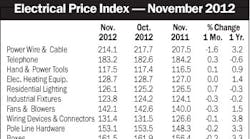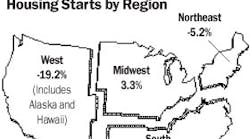Latest from Mag
People - Dec 21, 2012
Obituaries - Dec 21, 2012
November EPI Index Shows No Change
Housing Starts Dip 4% in November
Electrical Marketing - December 21, 2012
Around the Industry - Dec 21, 2012
The National Association of Electrical Distributors (NAED), St. Louis, is urging its members and affiliates to contact their senators following the passage of H.R. 660, the Small Business Health and Fairness Act of 2003, by the House of Representatives on June 19.
While the bipartisan bill made its way through the House on a solid 262 to 162 vote, the Senate is expected to pose a greater challenge.
“This is a great win for us, but it’s really just the beginning,” said NAED Government Affairs Liaison Ed Orlet. “The real battle will be in the U.S. Senate. Electrical distributors need to be heard loud and clear: H.R. 660 must pass.”
Known as the AHP Bill, this legislation would allow small businesses to form Association Health Plans (AHPs) exempt from costly state insurance regulations. AHPs would be regulated by a single set of federally prescribed rules, putting them on a level playing field with most union and corporate health plans. With the typical NAED member currently receiving double digit increases in health insurance premiums, supporters expect AHPs to give small businesses more negotiating power with insurance providers, bringing costs down.
Along with many other associations, NAED has put much effort this year into backing the AHP Bill. Grassroots lobbying and legislation updates have mobilized members to take action.
NAED is urging members and affiliates to contact their senators at this crucial time. NAED members can use a form at the “Government Watch” link on www.naed.org to send a customizable email or printed letter urging their senators to support H.R. 660.
According to data compiled by the National Association of Wholesaler-Distributors (NAW), Washington, D.C., wholesaler/distributor employer-sponsored health insurance premiums rose an average of 19 percent from 2002 to 2003. For distributors with fewer than 50 employees, the increase averaged 23 percent.

